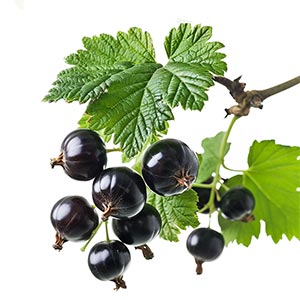Black current is a fruit that has been used in perfumery since ancient times. The Greeks and Romans incorporated it into their aromatic blends for religious ceremonies and personal grooming.In the 12th century, archaeologists were able to testify to its therapeutic action, particularly as a cure for gout. This fruit appeared in France at the end of the 16th century, but it was only in the 18th century that the word blackcurrant was coined. Until then, it was called poyvrier, most likely due to its black berries.The black currant is a bushy shrub that grows wild in Northern Europe, as far as Lapland and Siberia. Russia is the world's largest producer of black currants, with 300,000 tonnes of black currants per year, mainly for self-consumption. France is in fourth place behind Poland and the United Kingdom.Black currant is a popular note used in perfumery to add a fruity, tart, and slightly sweet aroma to fragrances. It is derived from the blackcurrant fruit, which is native to Europe and Asia. In perfumery, black currant can be found in both men's and women's fragrances and is often used as a top or middle note.
Natural or Synthetic?
Black currant scent is derived both naturally from Ribes nigrum (particularly from buds) and synthetically. Natural extraction involves solvent extraction, capturing the tangy, green, fruity scent. Synthetics like Bourgeonal mimic these notes for consistency and cost-effectiveness in perfumery.
Fragrance Families Black Currant Most Commonly Found In
Show fragrances that contain Black Currant as a note



